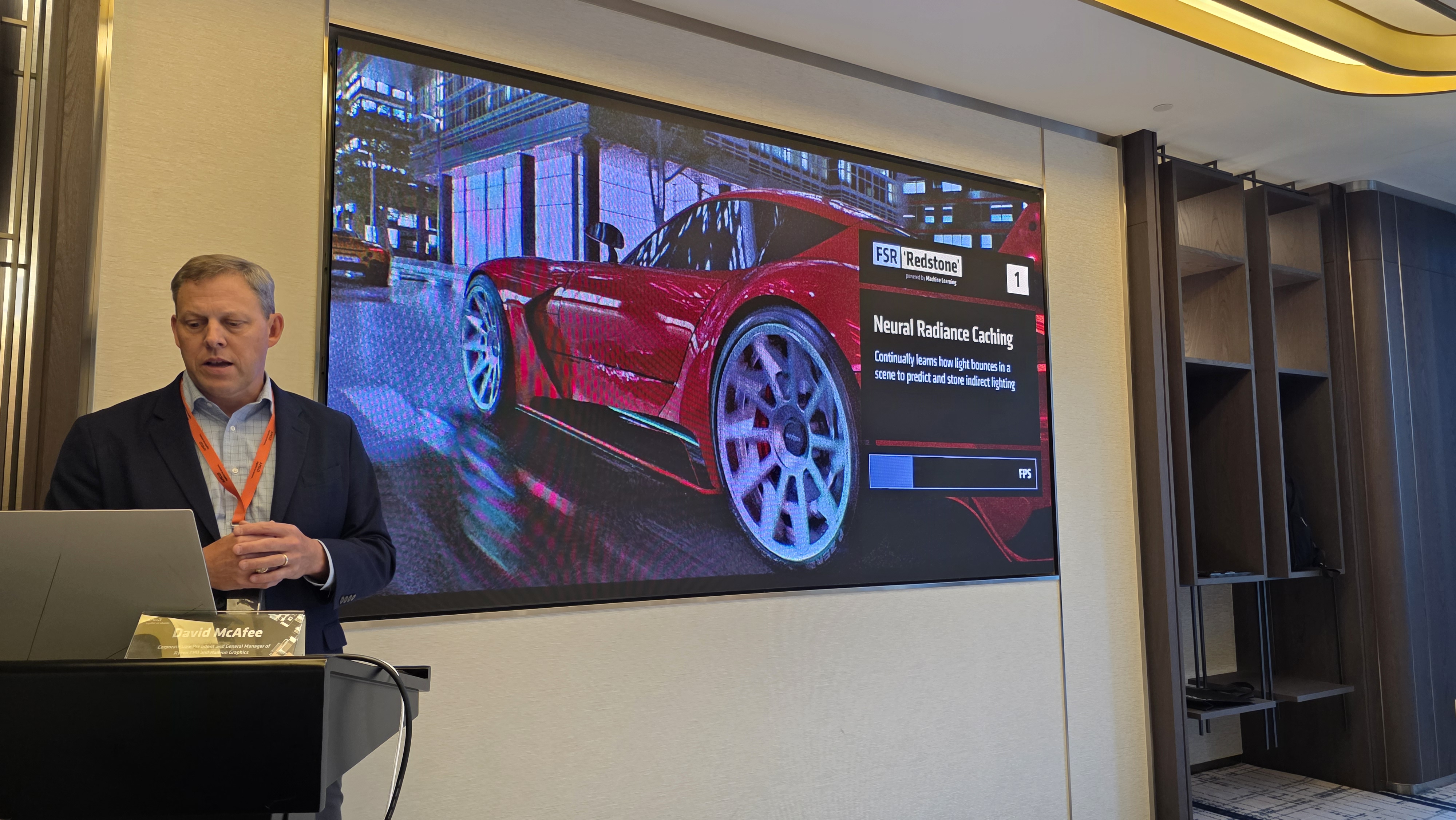IbizaPocholo
NeoGAFs Kent Brockman

AMD's FSR Redstone uses machine learning to achieve parity with Nvidia DLSS
The next evolution in FSR frame generation
As part of its Computex 2025 announcements, AMD has given gamers a sneak peek at the company's major update for its FidelityFX Super Resolution (FSR) technology. Dubbed FSR Redstone, the upcoming installment will bring many new features to match rival Nvidia's Deep Learning Super Sampling (DLSS).
AMD is already plotting ahead and preparing FSR Redstone as the next substantial upgrade for FSR.
Although AMD did not provide specific details, the chipmaker emphasized three features to be included in FSR Redstone: neural radiance caching, machine learning ray regeneration, and machine learning frame generation. Some of these features might sound familiar, as they are already part of the Nvidia DLSS suite.
AMD states that neural radiance caching effectively learns how light reflects within a scene. The objective is to predict and store indirect lighting assets in a cache, which can subsequently be used to generate heaps of other rays. Logically, this helps accelerate path tracing.
Ray regeneration is equivalent to Nvidia's ray reconstruction. This feature leverages a trained neural network to regenerate pixels that couldn't be accurately traced. Thanks to machine learning, it can predict and filter grainy noise in real time.

